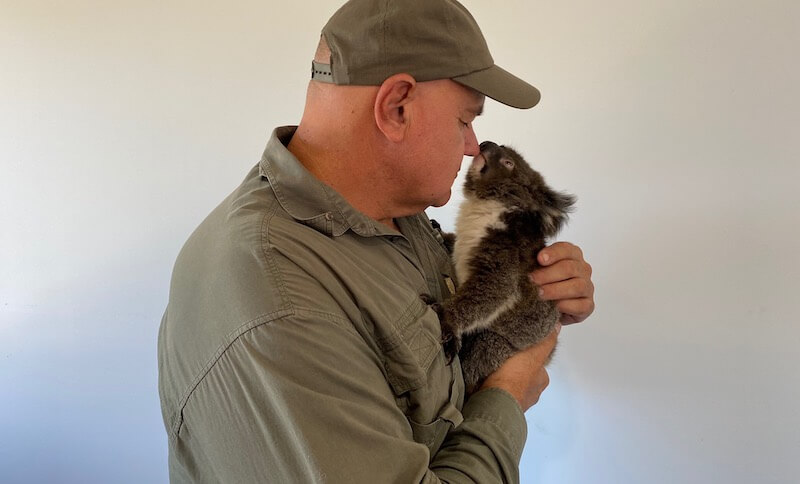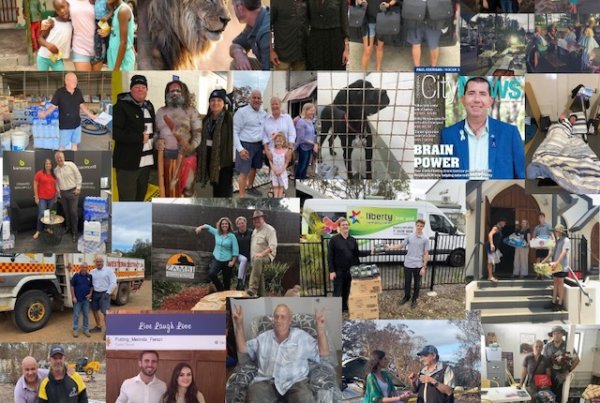The impact of Natural Disasters on pets and animals is heartbreaking.
 Animal casualties will almost always be higher than human victims.
Animal casualties will almost always be higher than human victims.
When animals die during natural disasters, it has a devastating impact on the wildlife and people who rely on them for companionship and economic status.
Natural disasters put at risk the welfare, behaviour and health of:
- domestic animals,
- farm animals,
- wildlife,
- and captive animals in zoos/fauna parks
Animals in natural disasters
Governments and the global disaster response community know that protecting animals helps people rebuild their lives following a disaster.
Animals are rarely included in national disaster plans and investments, and their needs are seldom factored into relief operations.
There is very little in place to deal with this. Up until recently, animals, other than farm animals (livestock), were not officially considered in disaster management in Australia.
Following the Black Saturday Victorian bushfires in February 2009 and the Queensland floods in 2011 and the subsequent Commissions of Inquiry. Changes are made, although much more still needs to be done.
Being prepared for a disaster could save the lives of your pets, yourself and your family.
How to take care of your pets?
Fires
- If you are moving animals to a safer place, do so early to avoid late evacuation.
- When you decide to stay at home when a warning is issued, take care to secure gates as your pet may run away if afraid.
- If possible, keep your pet in a quiet room inside the house, preferably with small or no windows.
- Provide food and plenty of water.
- On high-risk days, take precautions for your pet before leaving home.
Floods can isolate households and make it necessary for you to take care of your pet and family until assistance is available.
Floods
- Find out from your local council if your property is at risk from flooding.
- If you plan to evacuate your pets, know the location of higher ground and consider how you will move your pets.
- If your pet comes into contact with floodwater, ensure they are cleaned immediately, as the water could contain harmful chemicals. Thunderstorms are short-lived, but they can be dangerous. They can cause your pet to feel anxious. Take the following precautions to keep your pet calm and safe.
Thunderstorms
- If possible, bring your pet inside during thunderstorms and supervise them.
Thunderstorms unsettle many animals, and they will feel safer in your company. - If your pet is outside, take care to secure gates as they may run away if afraid.
If you live in an area at risk from tropical cyclones, ask your local council where your closest evacuation centre is and whether it allows pets.
Tropical cyclones
- Prepare a kit that includes provisions of food, water and medical supplies for your pet.
- If a cyclone warning is issued, move your pet inside or to a safe place.
- After a cyclone, keep your pet away from hazards such as fallen electricity lines, debris or polluted water.
The ongoing drought in New South Wales and Queensland is having a devastating impact on both farm animals and wildlife.
NSW has one of the highest numbers of animal collisions in the country. The drought is highlighting the problem as kangaroos, wombats and other wild animals are increasingly in harm’s way.
Effects of Natural Disasters on wildlife
How do floods affect animals?
We do sometimes see news images of wildlife in dire situations, such as kangaroos stranded on a small piece of land above the surrounding floodwaters. But even here, many people consider their plight as a natural occurrence.
Without food, these animals will starve to death or succumb to other conditions they may have, such as injuries. Many animals are washed away or become so exhausted by always struggling in water that they die from hypothermia, shock or exhaustion.
What is the impact of natural disaster on animal habitat?
During the bushfires and cyclones, there are similar challenges. For those who do survive, there is often no food or shelter remaining. Smaller or injured animals are easy prey in this exposed environment. Many die a slow death from lack of food, injuries or from the constant struggle to find shelter.
During cyclones, species such as bats and fruit doves may have survived the first impact, but subsequently, die from a lack of food as often cyclones coincide with the fruiting of important feed trees that are destroyed. Other arboreal creatures die because all the vegetation has been stripped bare.
Unless the species is a threatened species with a high local profile such as koala or cassowary, little is done for wildlife during disasters by anyone other than struggling local wildlife carers. They are often themselves directly affected by the catastrophe (e.g., losing aviaries). Local vets in affected areas often have little experience or inclination to deal with wildlife.
Farm animals
As livestock is considered an asset to farmers, governments and agricultural organisations like the Farmers Federation will generally provide some assistance. Food is often airdropped by the landholder or with Government assistance. Farmers also are given warnings to move their animals to higher ground during floods.
Many farm animals still perish during these events. Large animals, like horses, are vulnerable because fences cut off any potential escape from the disaster. Farmers can underestimate the height of floodwaters and may not move their animals to higher ground. Others animals die because there is not enough help to get food or treatment to them.
MORE TO BE DONE
There is still clearly much to be done for all animals not just during a disaster but before and after disasters.
Disaster management plans are in place to deal with human safety and, to a large degree, property but up until very recently, they lacked plans for the management of animals in these situations.
It is clear that animal management needs to be a component of all disaster management plans.
How can you help in protecting animal habitat?
The New South Wales Department of Primary Industries helps communities become more resilient to natural disasters. In particular, they aim to ensure that the care of animals during natural disasters is planned well before an emergency occurs.
It involves taking better prevention and preparedness precautions so that animal rescue and recovery operations during and after a natural disaster can be minimised or, wherever possible, eliminated.
All animal owners and carers must understand that it is their responsibility to care for their animals before, during and after a natural disaster.
Imagine what we can achieve together:
One Light Charity promotes the human-animal bond and supports Registered Charities and projects who:
- protect street animals and pets,
- support farm animal welfare,
- stop wildlife abuse,
- eliminate painful animal testing,
- respond to natural disasters
- confront cruelty to animals in all of its forms.
Are you ready to help our furry friends? Go to our Campaign Our Animals Our Responsibility. We accept and make donations with cash, products, crypto and services.






